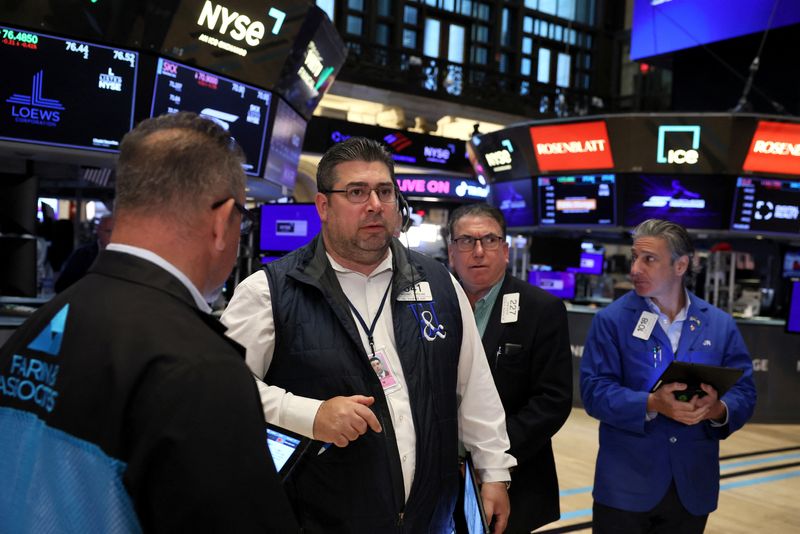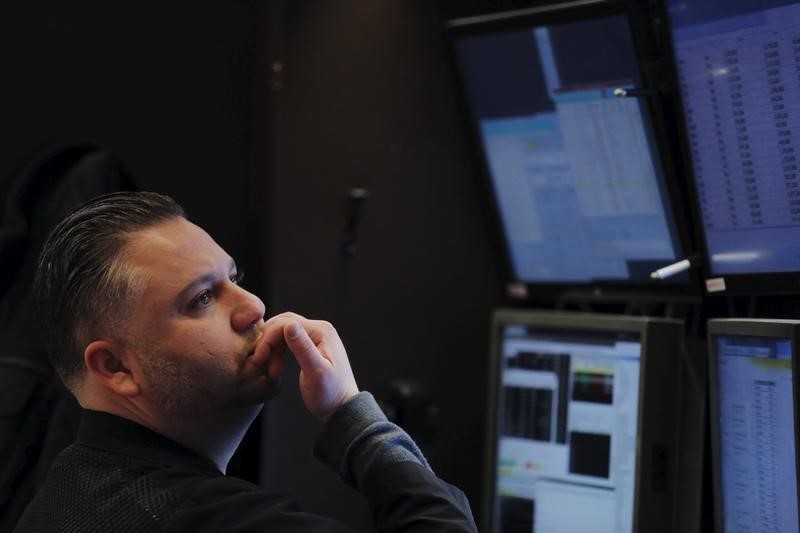By Noel Randewich and Arasu Kannagi Basil
(Reuters) -An outage on the New York Stock Exchange (NYSE) caused huge swings in shares of Berkshire Hathaway (NYSE:) and Barrick Gold (NYSE:), and trading halted in dozens of other companies on Monday, before the problem was repaired.
The NYSE, owned by Intercontinental Exchange (NYSE:), said late in the morning that a technical issue had been resolved and affected stocks had resumed trading.
It was the second stock market hiccup in less than a week, after an outage last Thursday affected the distribution of real-time data for the and Dow Jones indexes for more than an hour.
The NYSE said in a statement that it and other exchanges were canceling all erroneous trades in Berkshire Hathaway’s Class A shares related to the 9:50-9:51 ET outage, at or below $603,718.30 per share.
The NYSE also said it was canceling erroneous trades in Nuscale Power, Barrick Gold, Chipotle Mexican Grill (NYSE:) and other stocks affected by a technical glitch. In total, it reviewed trades in about 40 securities.
Berkshire Hathaway and Barrick Gold were found to be down 99.97% and 98.54% respectively at one point due to the technical issue, before these trades were corrected.
After trading resumed, Berkshire Hathaway closed 0.6% higher at $631,110.10, and Barrick Gold climbed nearly 2% to $17.42.
The S&P 500 ended the day up 0.1%.
The Consolidated Tape Association (CTA), responsible for distributing real-time trading data on stock exchanges, said on Monday that the problem was related to a new software release in one of its data centers.
The CTA said it resolved the issue by switching to a secondary data center running the previous version of the software.
Some stocks halted on the NYSE showed unusually large moves.
Berkshire, Barrick Gold and Chipotle did not respond to requests for comment on Monday’s technical issue.
The NYSE and the CTA said the problem was related to limiting up-limit down bands, intended to prevent extraordinary market volatility and extreme price movements in individual stocks by preventing trades outside specific price ranges.
The price range for each security is set at a percentage above and below the average price over the previous five minutes.
The tapes were developed as part of the response by financial regulators and stock exchanges to the 2010 “flash crash,” which wiped out nearly $1 trillion in market capitalization in a matter of minutes.
On May 6, 2010, as stocks recovered from the financial crisis and in the early stages of what would become a nearly eleven-year bull market, prices fell nearly 700 points in a matter of minutes.
Stock market disruptions, caused by software and hardware glitches, cyberattacks and even hungry squirrels, have roiled markets and damaged investor confidence for decades, as trading has shifted from the bottoms and sinks of stock exchanges to electronic systems that track transactions near the match the speed of light. .

In February 2023, the NYSE said it would reimburse investors for losses due to an outage that caused widespread confusion and led to thousands of trades being voided.
The NYSE did not respond to a request for comment on whether it would compensate investors who may have been affected by Monday’s issuance.


